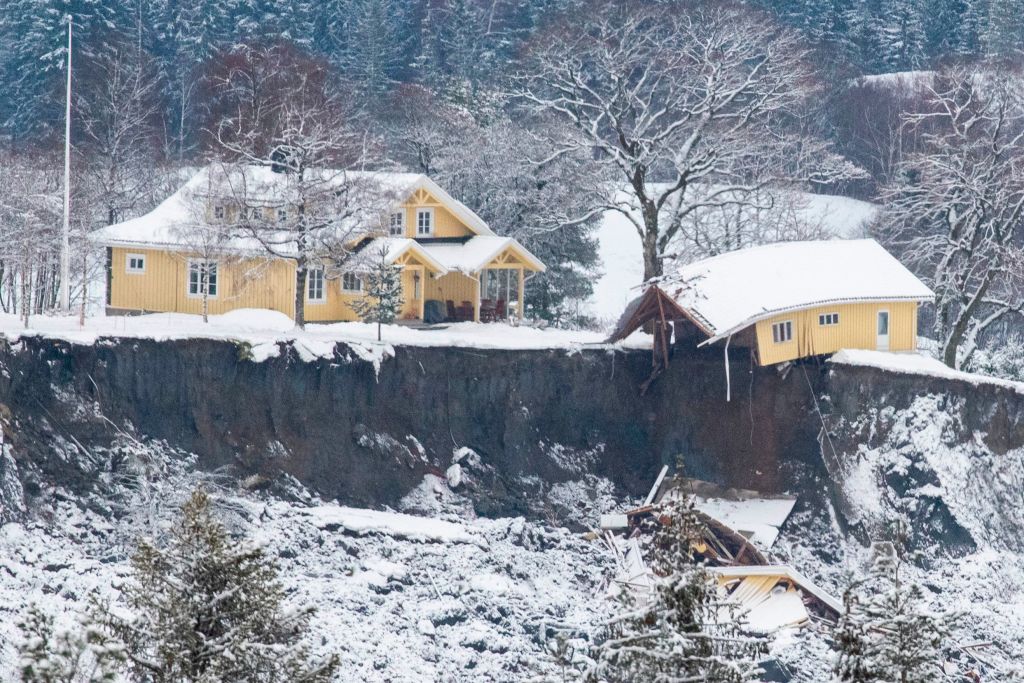Rescue workers have recovered a fifth body and are continuing to search for another five people still missing days after a landslide buried homes near Norway’s capital, authorities said.
King Harald was due Sunday to visit the village of Ask, 25 kilometres northeast of Oslo, where an intense search and rescue operation has been underway since disaster struck in the early hours of Wednesday morning.
“Just before 6am a deceased person was found,” a police statement said.
The discovery of a fourth body had been made Saturday after three were recovered the day before at the bleak, snow-covered scene at Ask, in Gjerdrum municipality.
Police on Saturday identified the body of the first person found on Friday as 31-year-old Eirik Grønolen.
The identities of the four other dead have not been released.
On Friday they released a list of the names of 10 people unaccounted for: eight adults, a two-year-old and a 13-year-old child.
Police have also said 10 people were injured in the landslide, including one seriously who was transferred to Oslo for treatment shortly after the disaster.
As a whole hillside collapsed, homes were buried under mud, others cut in two and some houses left teetering over a crater caused by the mudslide, with several subsequently falling over the edge.
The landslide destroyed several houses and shifted others hundreds of metres.
Earlier on Saturday, local police chief Ida Melbo Oystese said authorities hoped some people might have survived thanks to pockets of air inside partially intact buildings.
‘Work through the night’
About a thousand people have had to be evacuated from Gjerdrum, which has a population of 5,000, because of fears for the safety of their homes. There was more movement of land overnight Friday to Saturday.
“We are at a hotel,” two of the evacuees, Olav Gjerdingen and Sissel Meyer Gjerdingen, told AFP. “It is a completely surreal and terrible situation.”
Search and rescue teams have been using sniffer dogs, helicopters and drones in a bid to find survivors.
The search teams were also digging channels in the ground to evacuate anyone found alive.
“We have built so many evacuation routes in order to be able to take (survivors) out quickly that we can now work through the night,” rescue team official Knut Halvorsen told reporters late in the afternoon.
The Norwegian Water Resources and Energy Directorate (NVE) said the disaster was a “quick clay slide” of approximately 300 by 800 metres.
Quick clay is a sort of clay found in Norway and Sweden that can collapse and turn to fluid when overstressed.
The authorities have banned all aircraft from the disaster area until 3 pm Monday as they conduct aerial searches.
Visiting the site on Wednesday, Prime Minister Erna Solberg described it as one of the biggest landslides the country had ever experienced.
The royal court said in a statement that the king, his wife Sonja and Crown Prince Haakon would visit the disaster area toward the end of Sunday morning.
The disaster has seized the attention of this nation of five million people over the New Year’s holidays.







